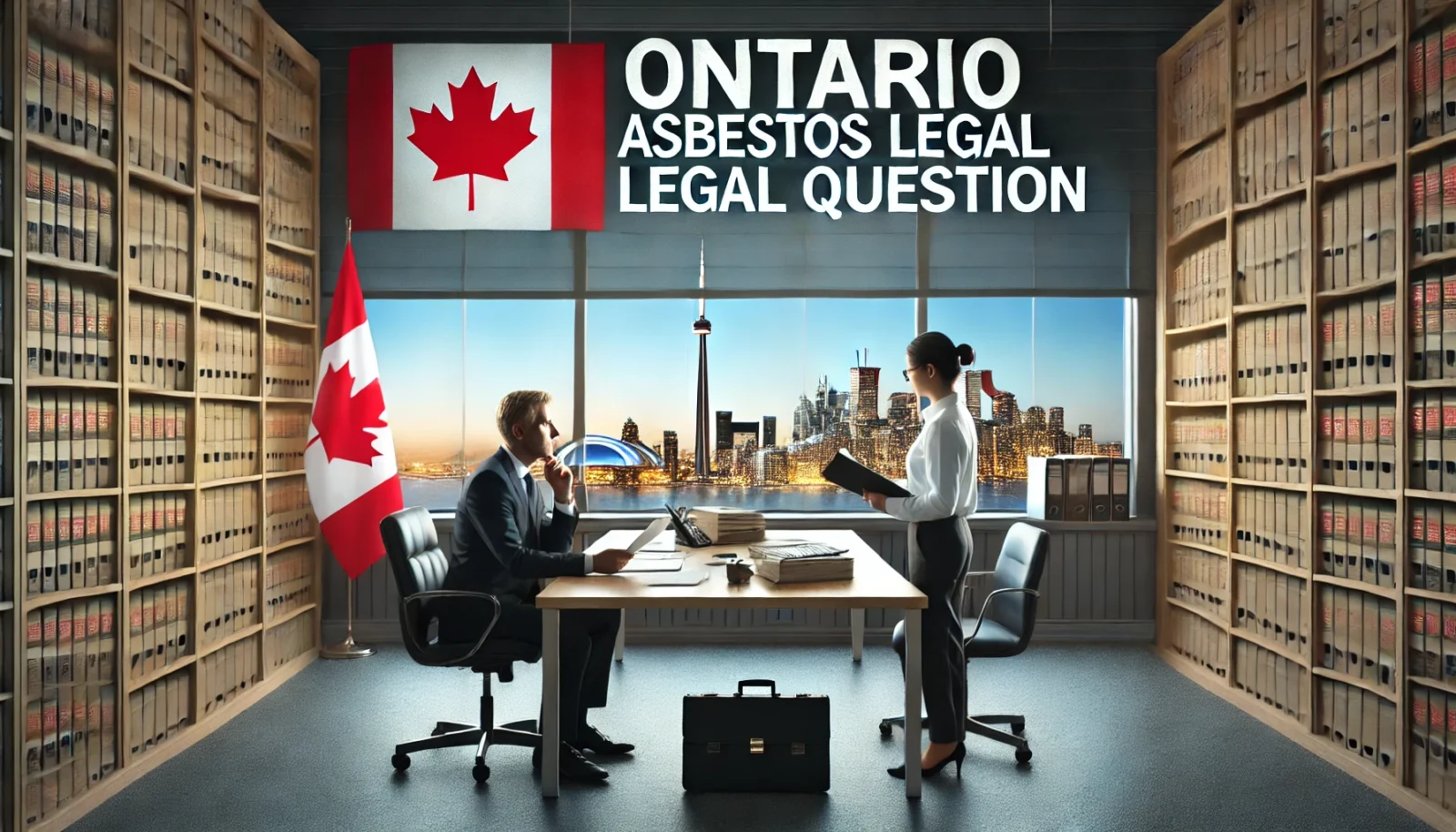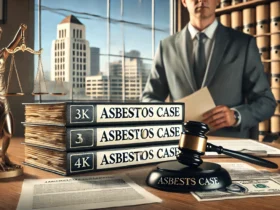Introduction To Asbestos In Ontario
Asbestos was commonly used in Ontario for many years in construction materials, insulation, and other products. It became popular due to its heat resistance and durability. However, asbestos exposure is dangerous. It can lead to serious health problems such as lung cancer, asbestosis, and mesothelioma. These diseases are caused by inhaling asbestos fibers, which can remain in the body for a long time. Many buildings in Ontario still have asbestos, especially older homes, schools, and commercial buildings. This creates health risks for workers and residents.
The legal framework in Ontario is strict when it comes to managing asbestos. The Occupational Health and Safety Act (OHSA) in Ontario regulates asbestos removal, handling, and disposal. The Ministry of Labour enforces these laws. Ontario laws require property owners to assess their buildings for asbestos, especially before renovations or demolition. Licensed professionals must handle asbestos removal to reduce health risks. Violating these laws can lead to fines and legal action. The Ontario asbestos legal question often arises about compensation for people exposed to asbestos and whether they can claim damages. Understanding the risks and laws related to asbestos in Ontario is essential for both individuals and businesses.
What Is Asbestos And Why Is It Dangerous?
Asbestos is a natural mineral made of thin fibers that are resistant to heat, fire, and chemicals. It was once widely used in many industries, including construction. However, asbestos is now known to be very dangerous. When disturbed, asbestos fibers can become airborne and easily inhaled. Over time, these fibers can cause serious health issues. The main diseases caused by asbestos exposure include mesothelioma, which is a rare and aggressive form of cancer, lung cancer, and asbestosis, a lung disease that leads to permanent lung damage. The symptoms of these diseases often appear many years after exposure.
In Ontario, asbestos is still found in older buildings, such as homes, schools, and commercial properties. It is commonly present in insulation, floor tiles, cement, and roofing materials. Workers involved in renovation, demolition, or maintenance of these buildings face the highest risk of exposure. Understanding the dangers of asbestos is essential for protecting health and preventing further exposure in Ontario.
Ontario Asbestos Regulations
In Ontario, the government has set strict regulations to control asbestos exposure and protect the public. The Occupational Health and Safety Act (OHSA) is the primary law governing the handling of asbestos. Under this law, employers must take steps to ensure a safe workplace where asbestos is present. They must identify asbestos-containing materials, inform workers, and ensure safe removal or handling by trained professionals.
Key regulations include ensuring that asbestos removal is done by licensed contractors and providing protective gear for workers. The Ministry of Labour, Immigration, Training and Skills Development (MLITSD) is responsible for enforcing these rules. This ministry conducts inspections, offers guidance, and ensures that companies follow the rules to minimize exposure risks. Violations of asbestos regulations can lead to significant fines and penalties, highlighting the importance of compliance with Ontario’s asbestos laws.
Legal Rights For Asbestos Victims In Ontario
In Ontario, individuals who have been exposed to asbestos have specific legal protections. These protections aim to provide justice and compensation for those suffering from asbestos-related diseases. Workers in industries where asbestos exposure is common, such as construction or manufacturing, have rights under Ontario’s laws. Employers are required to provide a safe working environment, and failure to do so can lead to legal action.
Workers who have been exposed to asbestos and develop related illnesses, such as mesothelioma, lung cancer, or asbestosis, can seek compensation through the Workplace Safety and Insurance Board (WSIB). Additionally, those who believe their exposure was due to negligence by their employer or other parties can file lawsuits seeking damages. Victims may also claim for medical expenses, lost income, and pain and suffering. Compensation for asbestos victims in Ontario is an essential part of their legal rights, ensuring they receive support for their health struggles.
Asbestos Litigation In Ontario
Asbestos litigation in Ontario can involve different types of legal cases, including personal injury claims and wrongful death lawsuits. Victims exposed to asbestos can file individual claims against employers, manufacturers, or property owners who failed to protect them from asbestos exposure. These lawsuits often focus on proving negligence in handling asbestos or not providing proper safety measures.
Another significant type of asbestos litigation is class action lawsuits. These cases involve groups of individuals who have been harmed by asbestos exposure from a common source. Class actions allow multiple victims to pool their resources and file a single lawsuit. Some notable asbestos-related cases in Ontario have set legal precedents for how victims can seek justice and compensation. Through both individual and class action claims, asbestos victims can hold responsible parties accountable for their suffering.
How To File An Asbestos-related Claim In Ontario
Filing an asbestos-related claim in Ontario involves several steps. First, it is crucial to consult with a lawyer who specializes in asbestos cases. They will guide you through the process and ensure that your claim is strong. To begin, gather all necessary documents and evidence. This includes medical records showing the diagnosis of an asbestos-related illness, proof of asbestos exposure (such as work history or exposure in a building), and documentation of the impact on your life, such as medical bills and lost wages.
Once the evidence is collected, your lawyer will file the claim with the appropriate court or through the Workplace Safety and Insurance Board (WSIB) if it’s work-related. It’s important to note the statute of limitations in Ontario, which usually gives victims two years from the diagnosis or discovery of asbestos-related illness to file a lawsuit. Missing this deadline may prevent you from pursuing legal action.
Hiring An Asbestos Lawyer In Ontario
Hiring a specialized asbestos lawyer is crucial when filing a claim in Ontario. Asbestos cases are complex, and having legal representation with expertise in this field increases your chances of success. Specialized lawyers understand the specific laws, medical details, and legal precedents associated with asbestos exposure cases.
When choosing the right lawyer, it’s essential to look for one with a proven track record in asbestos litigation. They should have experience with both individual and class action lawsuits. To find the best fit, ask potential lawyers questions such as: How many asbestos cases have you handled? What is your success rate? What are your fees?. A good asbestos lawyer will also offer a clear plan for how they intend to handle your case and the potential outcomes. This expertise will give you confidence in pursuing compensation for your asbestos-related illness.
Compensation For Asbestos-related Illnesses In Ontario
Victims of asbestos-related illnesses in Ontario may be eligible for different types of compensation. The available compensation typically covers medical expenses, such as treatment and medication, as well as lost wages for time spent away from work due to illness. Victims can also receive compensation for pain and suffering, which accounts for the emotional and physical distress caused by diseases like mesothelioma, lung cancer, and asbestosis.
There are two main avenues for seeking compensation: through the Workers’ Compensation Board (WCB) or by filing a personal injury lawsuit. If asbestos exposure occurred at the workplace, victims can apply for compensation through WCB, which covers work-related injuries and illnesses. However, if a third party or product manufacturer is responsible, victims may file personal injury lawsuits. These lawsuits can result in larger payouts, as they allow for additional damages like pain and suffering. Settlements and verdicts are calculated based on the severity of the illness, the financial impact on the victim, and the degree of negligence by the responsible party.
Asbestos Removal And Safety Guidelines In Ontario
In Ontario, strict rules for asbestos removal aim to protect workers and the public from exposure. Known as abatement procedures, these rules require careful handling and removal of asbestos to prevent airborne fibers. Homeowners, contractors, and property owners must follow Ontario’s safety regulations, especially when conducting renovations or demolitions that could disturb asbestos-containing materials.
The Ministry of Labour, Immigration, Training and Skills Development (MLITSD) sets clear guidelines on how to safely handle and remove asbestos. These guidelines include identifying asbestos in buildings, ensuring workers are trained in proper removal techniques, and using protective gear. For homeowners, it is important to hire certified professionals for asbestos removal, as attempting to do it yourself can be highly dangerous. Hiring experts ensures that the removal process complies with Ontario’s laws and minimizes health risks. Proper abatement procedures protect both workers and the general public from the long-term dangers of asbestos exposure.
Conclusion
In Ontario, victims of asbestos exposure must take specific legal steps to seek justice and compensation. It begins with identifying exposure sources, gathering medical evidence, and consulting a specialized asbestos lawyer. The importance of early legal action cannot be overstated, as the statute of limitations requires claims to be filed within a certain period after diagnosis. Acting quickly ensures that victims maximize their chances of receiving compensation for medical expenses, lost wages, and pain and suffering.
For those seeking legal advice, finding the right support is crucial. Victims should look for lawyers experienced in asbestos litigation who can guide them through the process and provide a clear plan. Following these steps helps victims protect their legal rights and secure the compensation they deserve. Early action and legal advice are key to navigating asbestos-related legal challenges in Ontario.
Frequently Asked Questions (Faq)
What Is The Deadline For Filing An Asbestos Claim In Ontario?
The statute of limitations in Ontario for filing an asbestos-related lawsuit is typically two years from the date of diagnosis or when the illness is discovered.
Can Family Members Of Asbestos Victims File A Lawsuit?
Yes, family members of asbestos victims may be able to file a wrongful death lawsuit if the victim has passed away due to an asbestos-related illness.
How Long Do Asbestos Cases Take To Settle In Ontario?
The timeline for settling asbestos cases in Ontario varies, but it can take months to a few years, depending on the complexity of the case and whether a settlement or court trial is required.
What Compensation Can Be Expected From Asbestos Lawsuits In Ontario?
Compensation typically covers medical expenses, lost wages, and pain and suffering. The amount depends on the severity of the illness, the impact on the victim’s life, and the degree of negligence involved in the exposure.
To read more, visit our blog page. We do have more topics!










Got a Questions?
Find us on Socials or Contact us and we’ll get back to you as soon as possible.